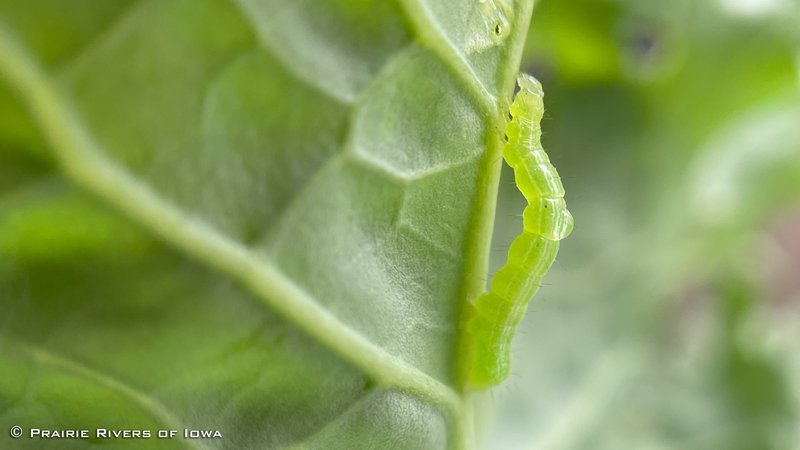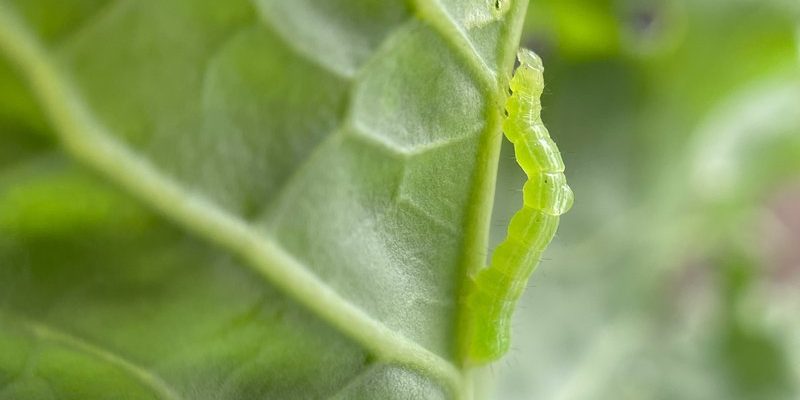
Just like eating a balanced meal gives you energy, using eco-friendly techniques can keep your plants strong and healthy. We’ll dive into how you can tackle inchworms without resorting to harmful chemicals, ensuring your garden remains a safe haven for both plants and wildlife. Let’s chat about some practical strategies to manage those inchworm invasions effectively!
Understanding Inchworms
Firstly, let’s get to know our little invaders a bit better. Inchworms are the larvae of various moth species, and they often appear in springtime when they start munching on leaves. They get their name from their characteristic movement: they inch along, pulling their back legs up and then stretching out. It’s kind of cute, but they can wreak havoc on your garden in no time!
You might be wondering why these tiny caterpillars are so problematic. Well, they have a voracious appetite when they’re on a mission to grow. A few inchworms can quickly turn into dozens, and before you know it, your plants’ leaves are looking more like lace than lush greenery. This is why understanding their life cycle plays a crucial role in managing them effectively.
Inchworms love certain trees and shrubs, such as apple, oak, and maple. So, if you have these types of plants in your garden, you’ll want to keep a close eye on them as the season changes. Knowing what attracts inchworms can help you take the right steps to keep your garden healthy.
Natural Repellents: Keeping Inchworms at Bay
Now, let’s explore some natural repellents you can use to keep inchworms away. You might think of these like a shield for your plants. One popular option is using **neem oil**, an organic pesticide that disrupts the feeding of these caterpillars. It’s extracted from the seeds of the neem tree and can be sprayed directly on your plants.
Here’s how to use it:
- Mix 2 tablespoons of neem oil with a quart of water.
- Add a few drops of dish soap (this helps it stick).
- Spray the mixture on affected plants, targeting the undersides of leaves where inchworms like to hide.
Another excellent option is **diluted garlic spray**. The strong smell of garlic repels many pests, including inchworms. Simply blend a few garlic cloves with water, strain it, and spray it on your plants.
These natural repellents are not only effective but safer for your plants and the environment. You might even find that they encourage beneficial insects to stick around, helping to keep your garden balanced.
Physical Controls: Hand-Picking and Traps
If you prefer a hands-on approach, hand-picking can be surprisingly effective. It may seem tedious, but if you spend a little time in your garden each day, you can catch the inchworms before they do significant damage.
To make this easier:
- Wear gloves and carry a bucket or bowl for collecting the inchworms.
- Check the undersides of leaves and branches where they often hide.
- Drop them into your bucket and dispose of them far from your garden.
For those who want a bit more ingenuity, setting up traps can work wonders too. One simple method is to create a **sticky trap** by applying a non-toxic adhesive to a board or even just using yellow sticky traps from a garden center. The inchworms will get stuck, and you can monitor the number of pests you’re dealing with.
It’s a bit like a game of “catch and release,” but instead, it’s just catch and move. Remember, the key is being diligent and staying on top of the situation before it escalates.
Encouraging Natural Predators in Your Garden
One of the best parts about managing inchworms naturally is how you can invite their natural predators to your garden. By creating a welcoming environment for birds, bats, and beneficial insects, you’re not just seeking to control inchworms but to establish a balanced ecosystem.
To attract these helpful creatures:
- Plant a variety of flowers, such as marigolds and daisies, which attract pollinators and insect-eating birds.
- Create sheltered areas with shrubs and brush piles for birds and beneficial insects to reside.
- Provide water sources, such as birdbaths, to keep them around.
Birds can eat dozens of caterpillars a day, so they’re excellent allies! Plus, having diverse wildlife adds beauty and life to your garden, making it more vibrant and healthy.
When to Use Insecticidal Soap
Sometimes, despite our best efforts, inchworm populations can get out of control. If you find that natural repellents and physical controls aren’t working as well as you’d hoped, you might consider **insecticidal soaps**. These products are typically made from natural plant oils and work by suffocating the pests on contact.
Here’s how to use insecticidal soap effectively:
- Choose a soap specifically designed for garden use.
- Spray on affected areas during the cooler parts of the day, like early morning or late evening.
- Ensure you thoroughly coat the inchworms and the affected leaves.
Using insecticidal soap should be a last resort, but it can help manage severe infestations without exposing your garden to harsh chemicals. Just remember to monitor your garden closely afterward, so you can see how effective it was.
Maintaining Healthy Plants to Prevent Infestations
A healthy garden is often your best line of defense against inchworm infestations. Think of your plants like people—a strong immune system can resist illness. When plants are healthy, they’re better equipped to deal with pests.
To keep your plants in tip-top shape:
- Ensure they’re getting adequate water and nutrients, which can come from organic fertilizers or compost.
- Practice good garden hygiene by clearing away old leaves and debris where inchworms may hide.
- Rotate your crops each year to prevent pests from finding a comfortable home.
By monitoring your plants and ensuring they have what they need to thrive, you’re setting a solid foundation. Healthy plants can withstand occasional munching without trouble!
Final Thoughts on Pesticide-Free Inchworm Management
Managing inchworms without pesticides is not just possible; it’s a rewarding endeavor that benefits your garden and the environment. By using natural repellents, hand-picking, encouraging predators, and maintaining plant health, you can effectively control inchworm populations.
Remember, patience is key, and a little vigilance can go a long way. So, roll up your sleeves, get a bit hands-on, and enjoy the process of nurturing a thriving, pesticide-free garden. You’ve got this!

